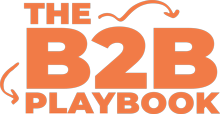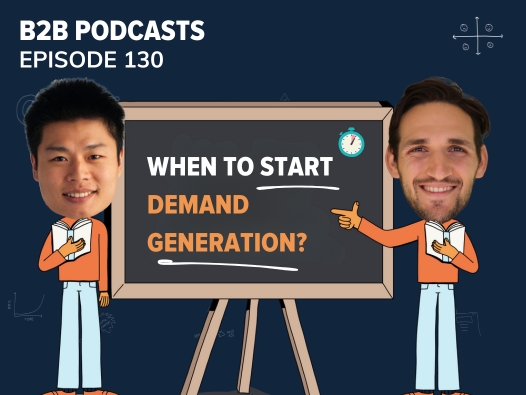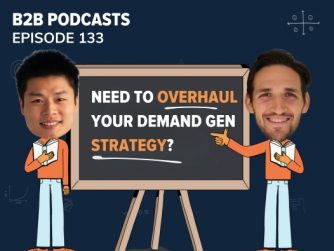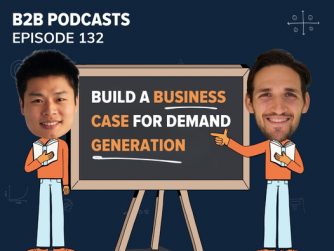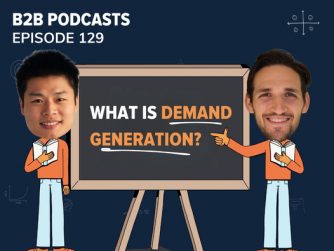When is the right time for your business to start investing in demand generation? This is the question we’re answering today in part 2 of our Demand Gen mini-series.
After working with 70+ businesses helping them to setup demand generation engines, we’ve had great exposure to a variety of B2B companies at different stages. What I’ve noticed is that there’s 3 key signs that your business is ready to start investing in demand generation.
This article assumes that you know what demand generation is, and are familiar with our own, detailed description of it (explored in pt.1 of this mini-series).
In this article I’ll first reiterate why Demand Generation is so important for businesses to scale. I’ll then walk you through the 3 key signs to look for in your business that you’re ready for Demand Generation.
Finally, I’ll provide some advice on how to get started with Demand Generation.
The whiteboard is coming out again for this one!
Listen To The Episode
Watch The Episode
Recap: Why Demand Generation is Important For Your Business to Scale
Demand generation is crucial for building awareness and desire in potential customers before they enter the buying cycle.
Why is it important to reach buyers before they enter the buying cycle?
Well, this is because research shows that only 3-5% of your target market are in ‘buying mode’ right now. As you scale, both you and your competitors try to take more of that 3-5% of the market. This results in greater competition for bigger slices of the same sized pie, often sending customer acquisition costs out of control and making it difficult to scale.
Combine this with another statistic that 8/10 companies won’t buy from you if they haven’t heard about you before they enter the buying cycle, then it starts to become pretty clear why scaling without demand generation feels like such a difficult task.
Let’s say for the sake of simplicity that your segment of Ideal Customers is 100 companies. If 5% are in ‘buy mode’, that leaves us with 5 companies. But when you take into consideration that 8/10 won’t buy from you unless they’ve heard about you before they enter the buying cycle, that leaves just 1 company that’s really going to consider working with you.
So 100 target companies very quickly becomes just 1 company that will realistically consider working with you.
So as you can see, starting demand gen too late can severely limit a business’s ability to scale and acquire new customers.
When Is The Right Time To Start Demand Generation?
You need to start demand generation well before you are tapping out of that 3-5% who are ready to buy from you right now. This is because great demand generation that’s well executed takes 1.5-2 sales cycles to really start working.
So the earlier you start, the better.
Having said that, there’s 3 key signs to look for in your business to see if you’re ready for demand generation.
Do You Have Product-Market Fit, or Product-Customer Fit?
Before investing into Demand Generation, your business should have product-market fit, rather than merely having product-customer fit.
Product-customer fit is where a lot of companies find themselves, particularly in the early stages. That’s where you have a bunch of foundational customers, and you’ve solved each of their problems by developing custom solutions. Customisation helps newer businesses win deals, however it means there isn’t a repeatable problem —> solution fit that your company provides.

In my whiteboard drawing above, we can see that three different customers (A, B, C) all have had slightly different problems solved with custom solutions. Let’s contrast this to Product-Market fit before we explore deeper why this is a problem.
Product-market fit is achieved when you are providing the same solution to the same problem that as set of your customer share. The solution you develop is not bespoke.
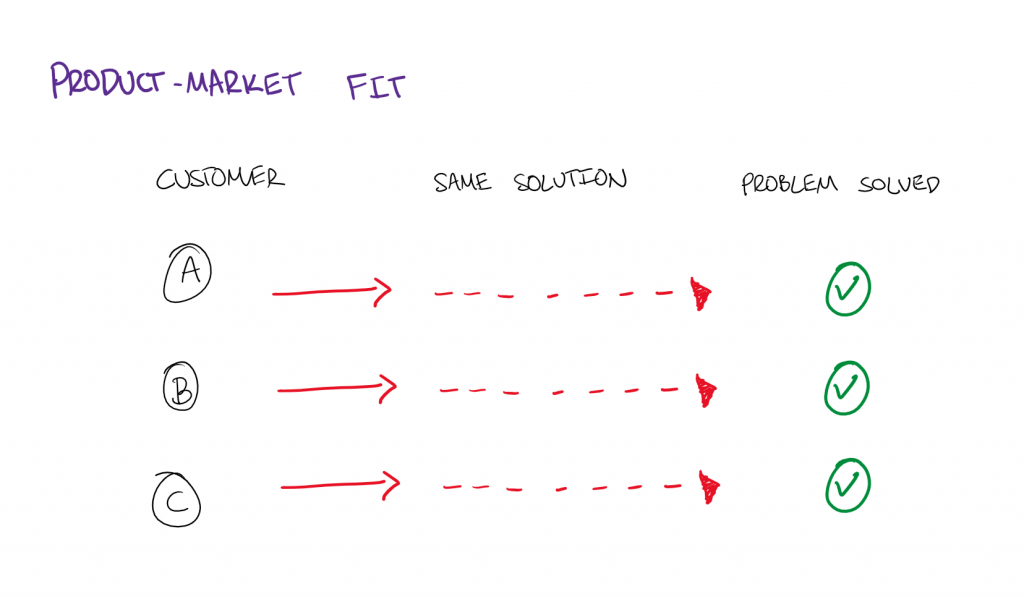
Because your customers are similar, the problems they experience are similar – which means your solution doesn’t have to change for each of them.
Why this is important is simply resource optimization. As demand generation marketers, our job is to build intense desire within a specific group, which requires the ability to speak to them on a one-to-many or one-to-few basis.
Having product-market fit allows for this scalability, as opposed to requiring highly tailored conversations for each individual customer with distinct pain points.
The Size Of Your Company
Companies that start to dedicate resources to Demand Generation are typically 20+ in size. This of course is quite a loose rule, as the makeup of a 20 person company can be so incredibly varied.
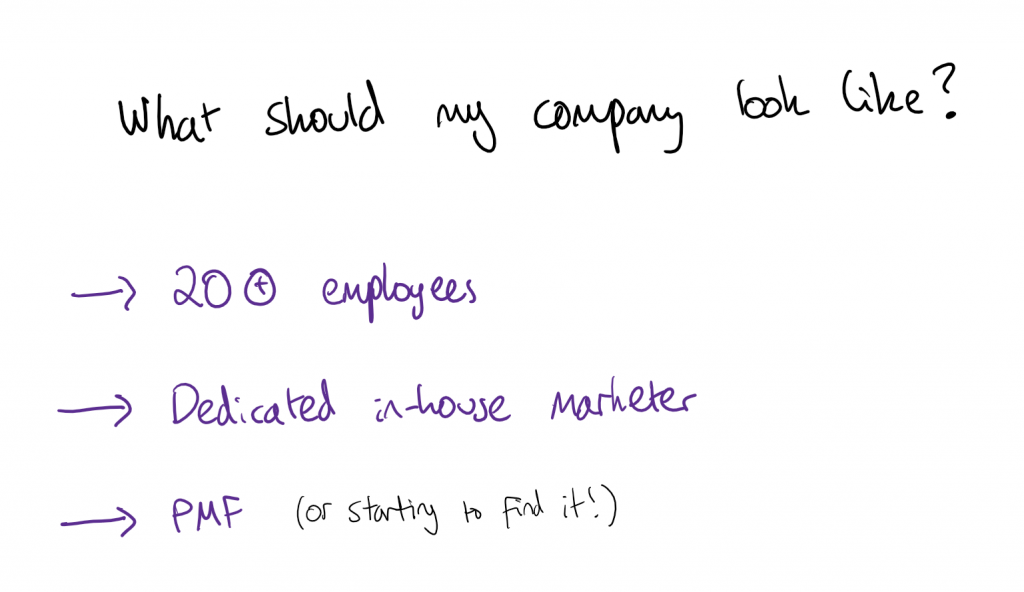
The number of employees is an indicator of the resources available. It’s typically where a solo inhouse marketer at a B2B company is in a regular rhythm of supporting sales requests and doing other activities to support the business. Now they’re being asked to contribute more to the business before they expand their team, which is where a demand generation plan becomes so important.
You Have An Existing Go-To-Market Strategy That’s Working
If you’ve made it to the milestone of 20+ employees, there should be an existing go-to-market strategy in place that’s working. This might be through founder-led sales, or through your outbound sales team, or event led – whatever it might be. But there’s an existing strategy there that indicates there’s a solid foundation upon which to build a demand generation program.
Rather than starting from scratch, demand generation can complement and amplify your proven acquisition channels, supercharging their impact.
Bonus: You Have A Dedicated In-House Marketer
Having a dedicated in-house marketer is another crucial factor that indicates your business is primed to implement a demand generation program successfully.
The information you need to make a demand generation program work comes from inside the business. This is why so many agencies do an awful job at ‘demand gen’ – they simply don’t have the information they need to make a difference.
Moreover, an in-house marketer can more effectively evangelize and rally cross-functional teams around the demand generation initiative. They understand the company’s culture, internal dynamics, and decision-making processes, enabling them to navigate potential roadblocks and secure buy-in from the right stakeholders.
You don’t need a big team in-house to do this either. We’ve worked with lots of businesses that have just one lonely in-house marketer. They have still managed to build fantastic demand gen programs that have contributed great pipeline.
Advice On How To Start Demand Generation
While there are so many benefits to demand generation, rarely do we encourage businesses to go ‘all in’ on it when first implementing a program. Instead, we recommend starting with a pilot project where you test it with just 1 product line and 1 segment within it.
This allows you to dedicate just 10% of your time or budget, allowing you to prove it out without putting all of your eggs in one basket.
We also recommend you try to think about demand generation activities as supporting existing acquisition. So for example, how can you support an existing founder who is really pushing the company forward by leading sales in their own right, or by their own reputation? Or maybe how can you make the most of the events that you are already attending?
Working your existing activities into an overarching demand gen plan is incredibly important, otherwise it will feel like you’re working two jobs. Look for those opportunities to kill two birds with one stone.
You Need A Demand Generation Plan
The marketers that have the most success with Demand Generation are the ones who strategically plan it and know what they have to do to execute it.
It doesn’t have to be executed over night, but if the right plan exists, you can break that down into tasks and slowly chip away at it. You’ll then find opportunities to turn existing activities into demand gen activities, and will be able to spot where the gaps are in execution.
Our 12 week program, The B2B Incubator gives you the strategy, templates and tools to plan and execute your Demand Generation program. Check out how marketers like you have used it to start contributing 80% of pipeline to their business.
Create Your Demand Engine in 12 Weeks
B2B marketing strategy that shows you step-by-step how to drive revenue
